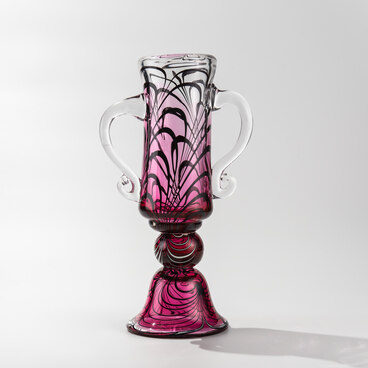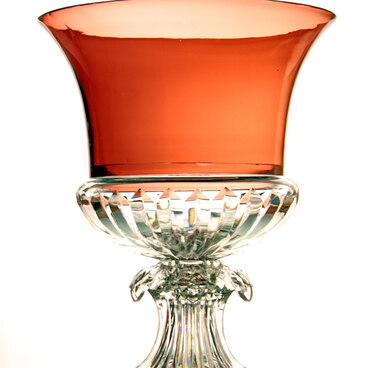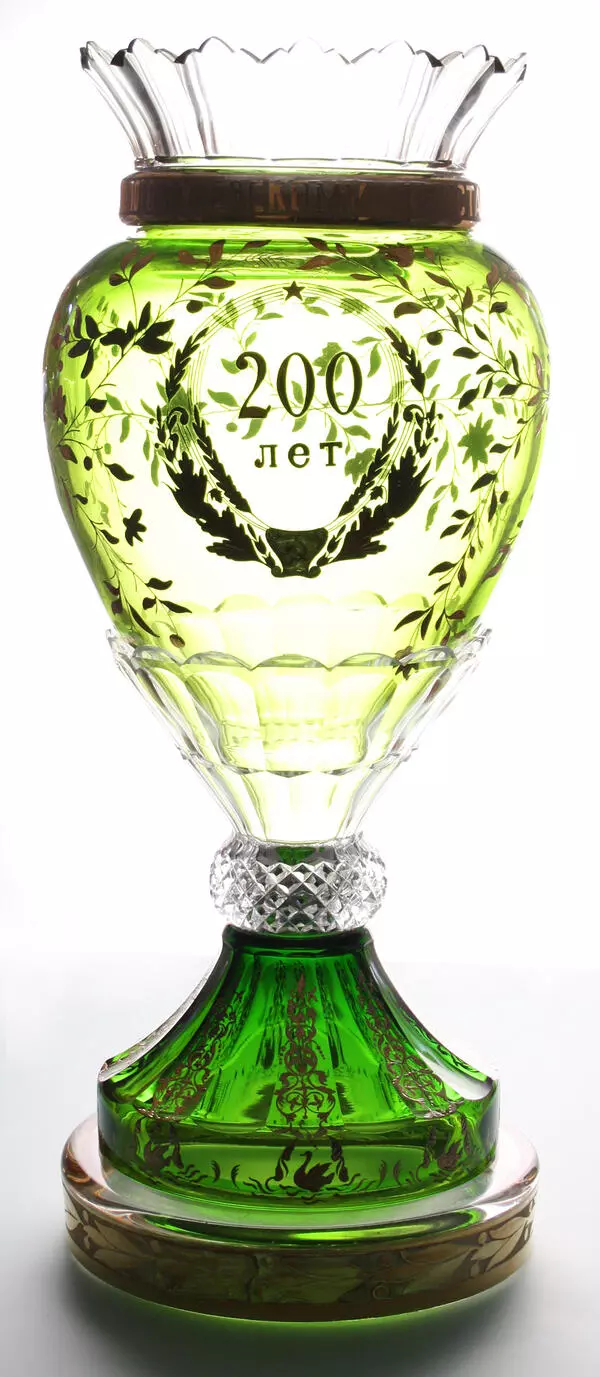The art of Yevgraf Shuvalov is filled with inspiration, the artist’s desire to bring others joy, to express love for his factory and respect for the work of others. Each of his items shows a great understanding of glass and its capabilities. Having worked at the Dyatkovo Crystal Factory between 1949 and 1985, Shuvalov developed around 500 types of glass and crystal products, with over 100 million items produced based on his patterns. An entire hall of the museum is dedicated to his work and houses around 2,500 items. His “Banquet” service embodies all the best traditions of Russian crystal art and is used at official receptions in the Kremlin. It is fair to say that there is a Shuvalov tradition in glass art.
The “Leaf” decorative vase is one of the large vases which were the artist’s signature item and represent an important part of his legacy. The festive yellow color of the glass mass and the large diamond-shaped pattern evoke associations with leaves falling off trees. Yevgraf Shuvalov often drew inspiration for his art from nature. The Crystal Museum houses the “Sunflower”, “Chamomile”, and “Birch” decorative vases, the “Blossom” and “Bellflower” services, the “Flower” dresser set, the “Dew Drop” wine set, and many other items.
Deep or diamond-shaped cutting can only be used to decorate an item if its walls are thick enough. This labor-intensive process involves using a grinding disc and a special machine. Initially, the image looks dull and does not shine. The distinctive gloss is achieved by polishing the item with hydrofluoric acid. The chemical polishing process takes around 40 minutes and requires several containers. Before and after the polishing, the items are washed under running water.
The yellow color is achieved by adding titanium and cerium compounds to the glass mass. They are always used together because neither of them is capable of coloring the glass mass on its own. There are two types of glass coloring: ionic and colloidal. Ionic coloring is based on the presence of positive ions of certain metals in the glass while colloidal coloring uses the selective scattering of colored beams. The method using titanium and cerium compounds is a type of ionic coloring.
The “Leaf” decorative vase is one of the large vases which were the artist’s signature item and represent an important part of his legacy. The festive yellow color of the glass mass and the large diamond-shaped pattern evoke associations with leaves falling off trees. Yevgraf Shuvalov often drew inspiration for his art from nature. The Crystal Museum houses the “Sunflower”, “Chamomile”, and “Birch” decorative vases, the “Blossom” and “Bellflower” services, the “Flower” dresser set, the “Dew Drop” wine set, and many other items.
Deep or diamond-shaped cutting can only be used to decorate an item if its walls are thick enough. This labor-intensive process involves using a grinding disc and a special machine. Initially, the image looks dull and does not shine. The distinctive gloss is achieved by polishing the item with hydrofluoric acid. The chemical polishing process takes around 40 minutes and requires several containers. Before and after the polishing, the items are washed under running water.
The yellow color is achieved by adding titanium and cerium compounds to the glass mass. They are always used together because neither of them is capable of coloring the glass mass on its own. There are two types of glass coloring: ionic and colloidal. Ionic coloring is based on the presence of positive ions of certain metals in the glass while colloidal coloring uses the selective scattering of colored beams. The method using titanium and cerium compounds is a type of ionic coloring.






